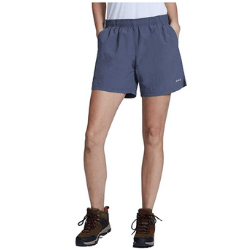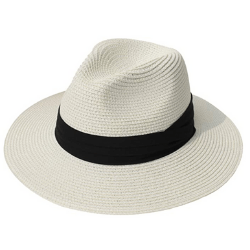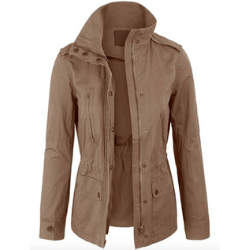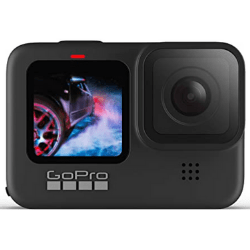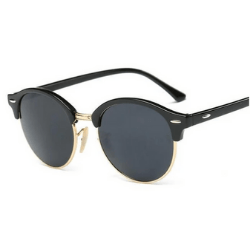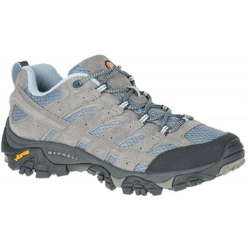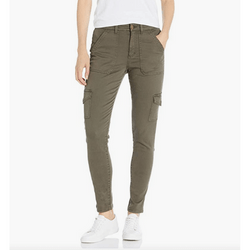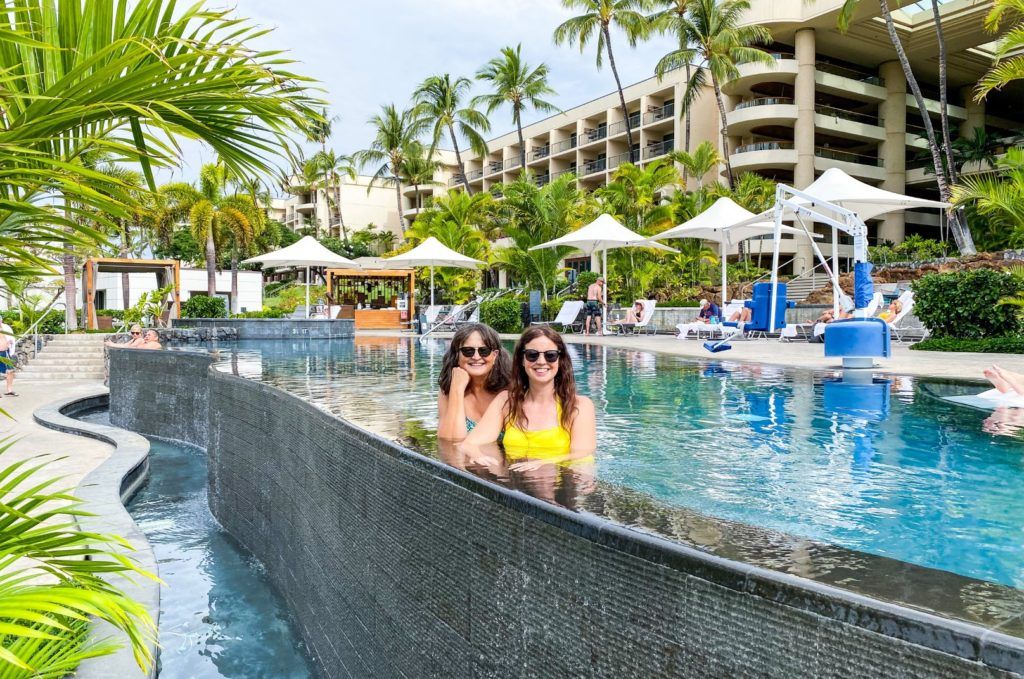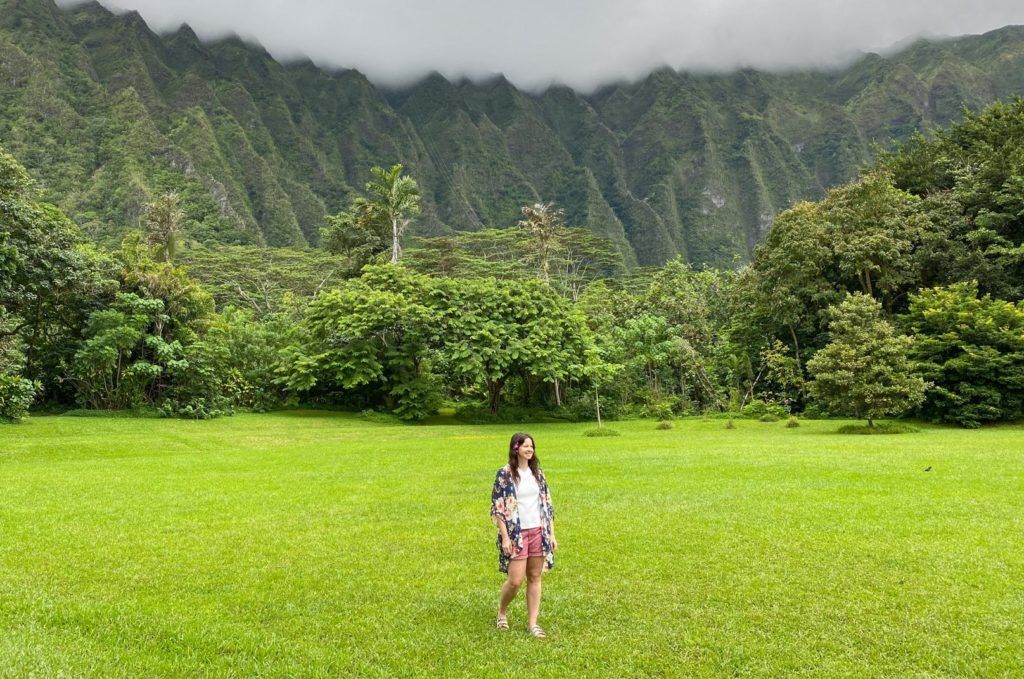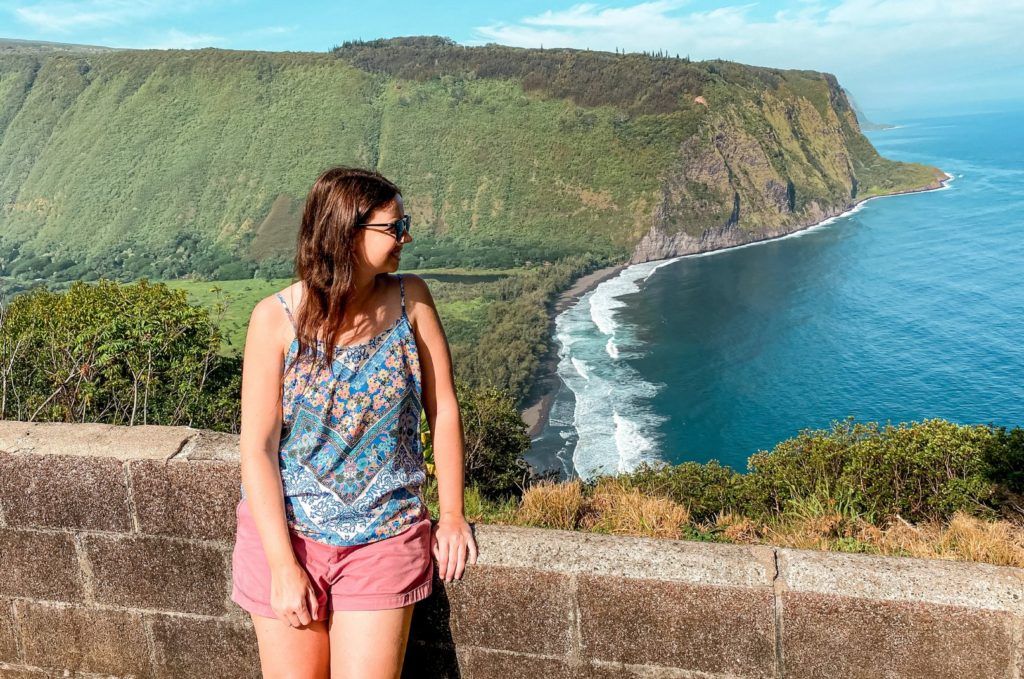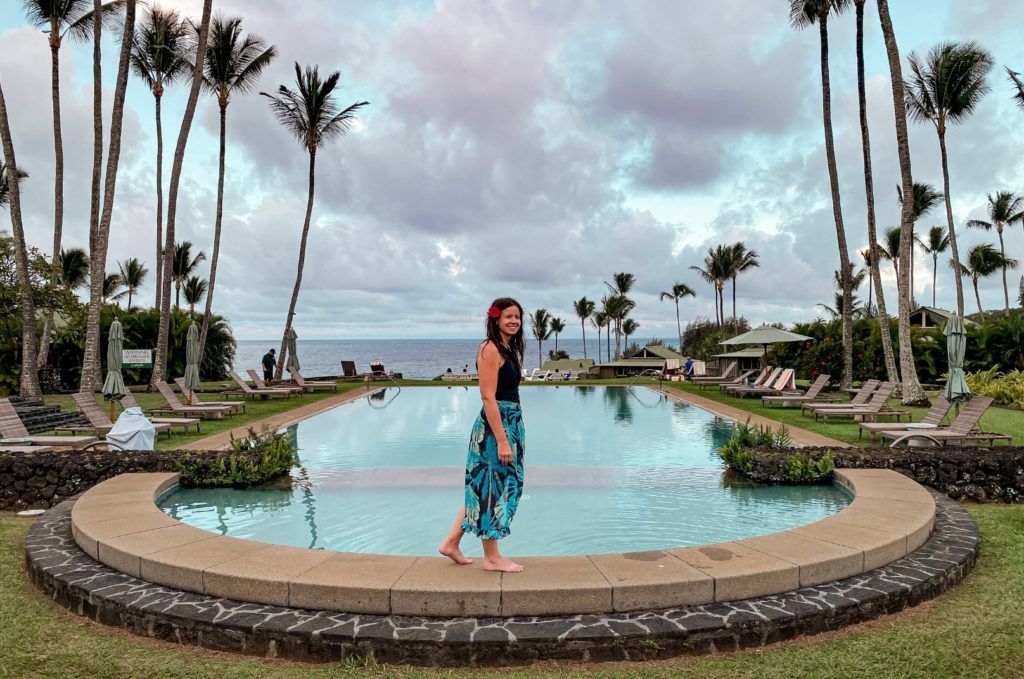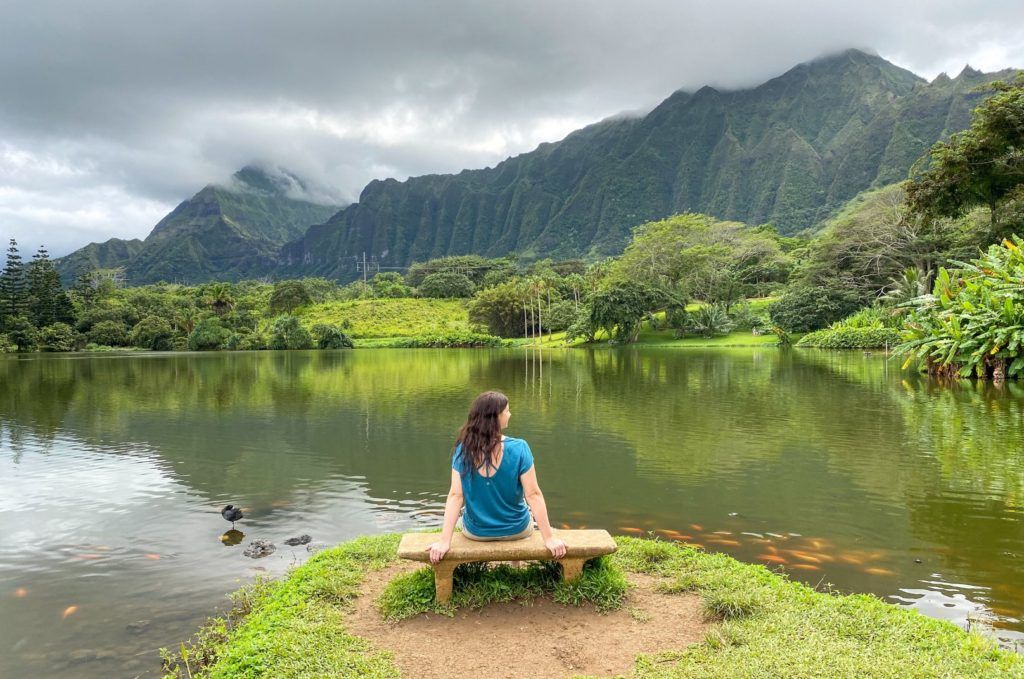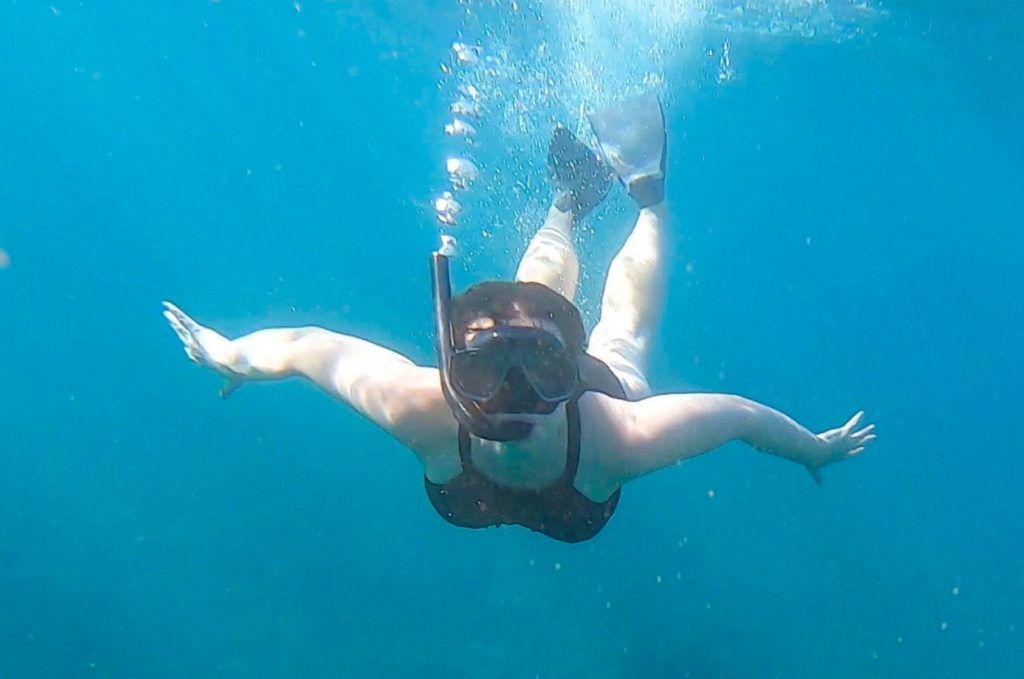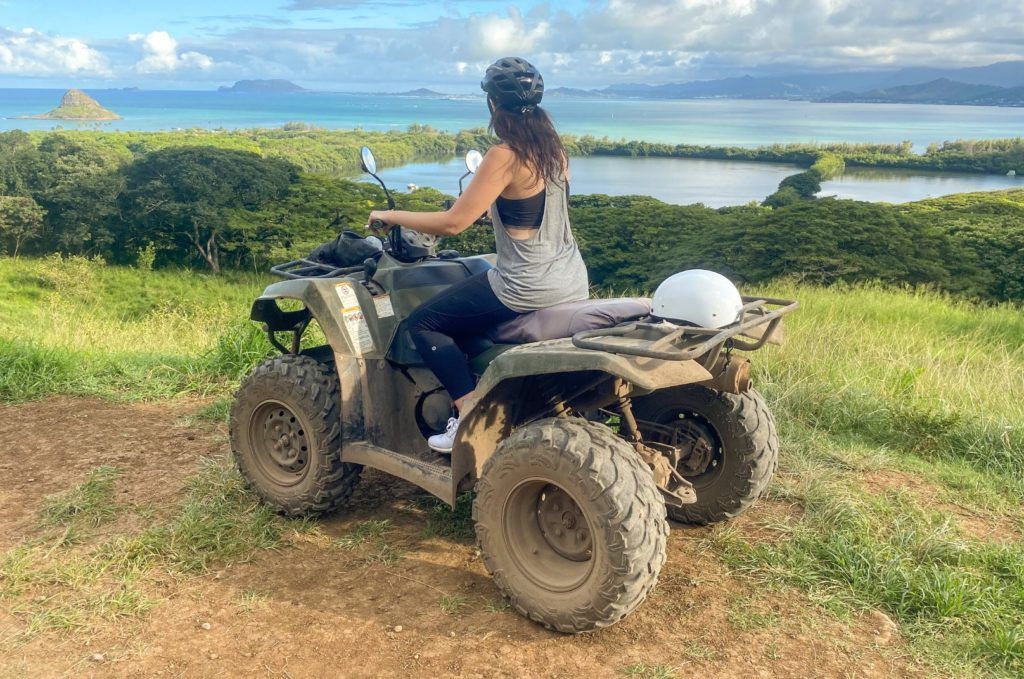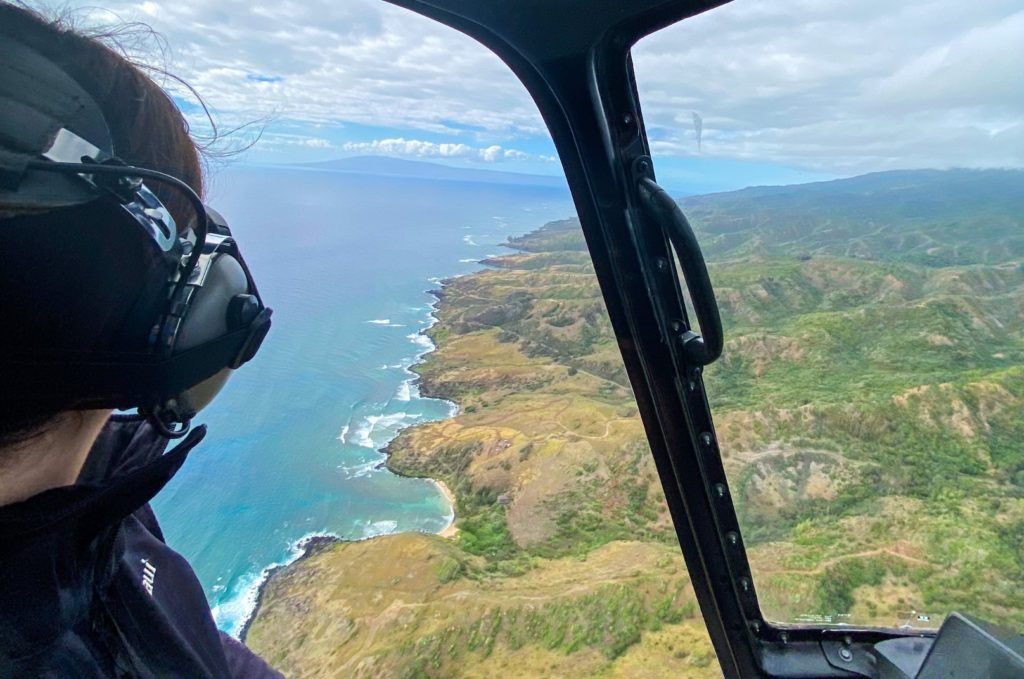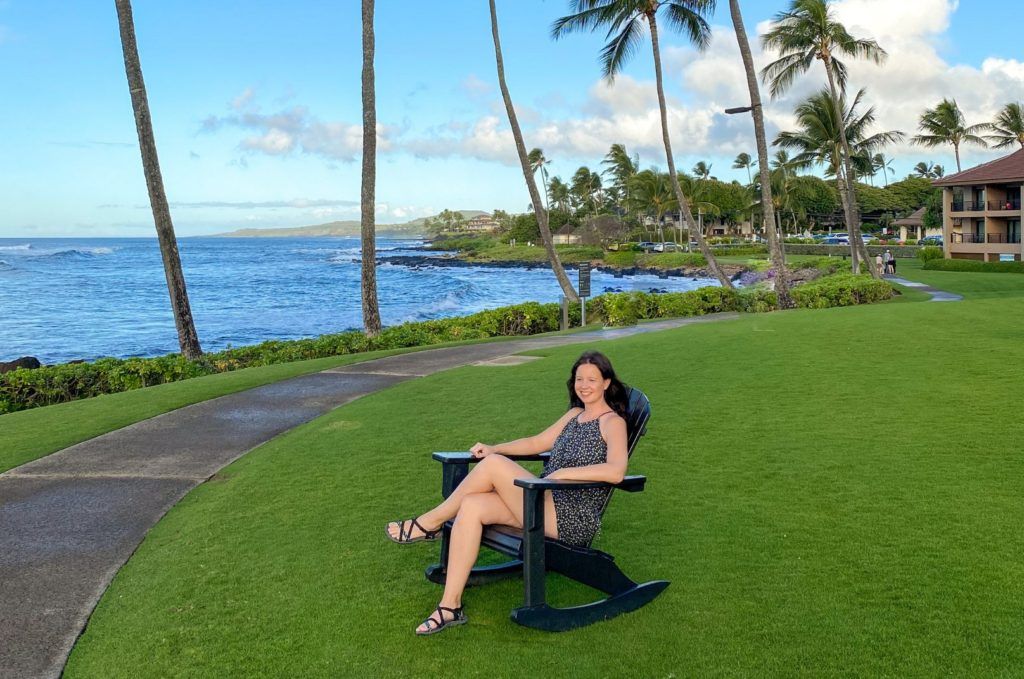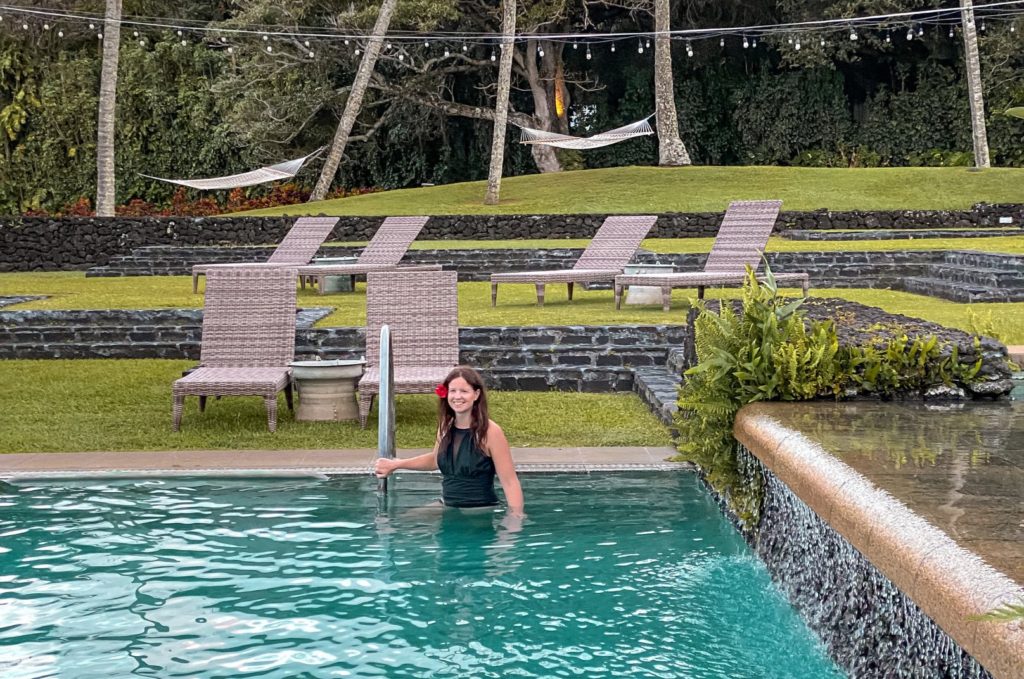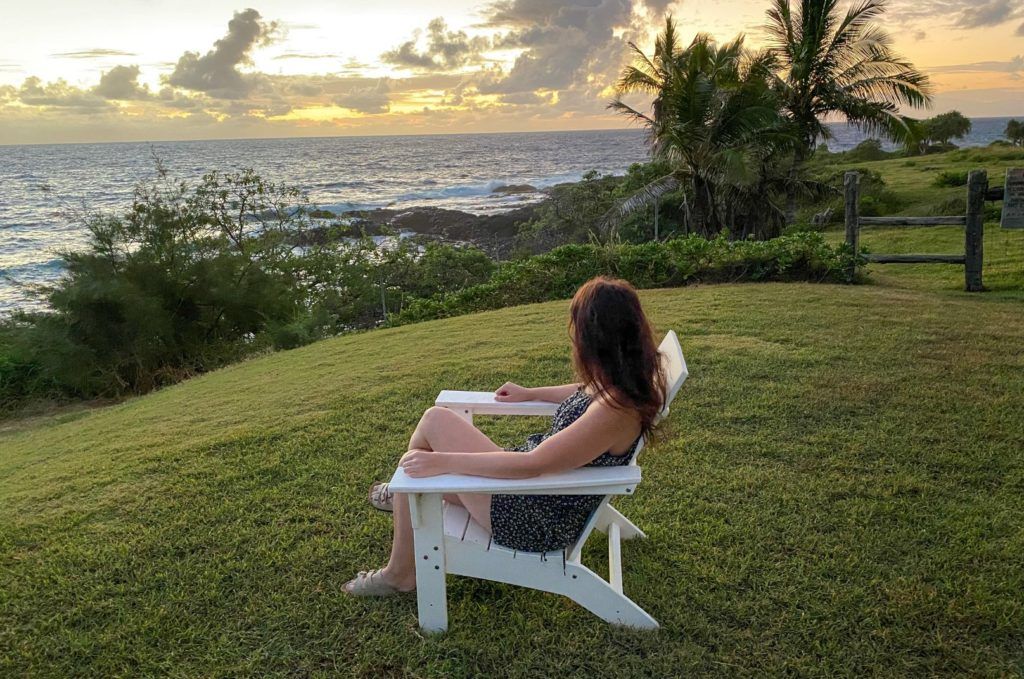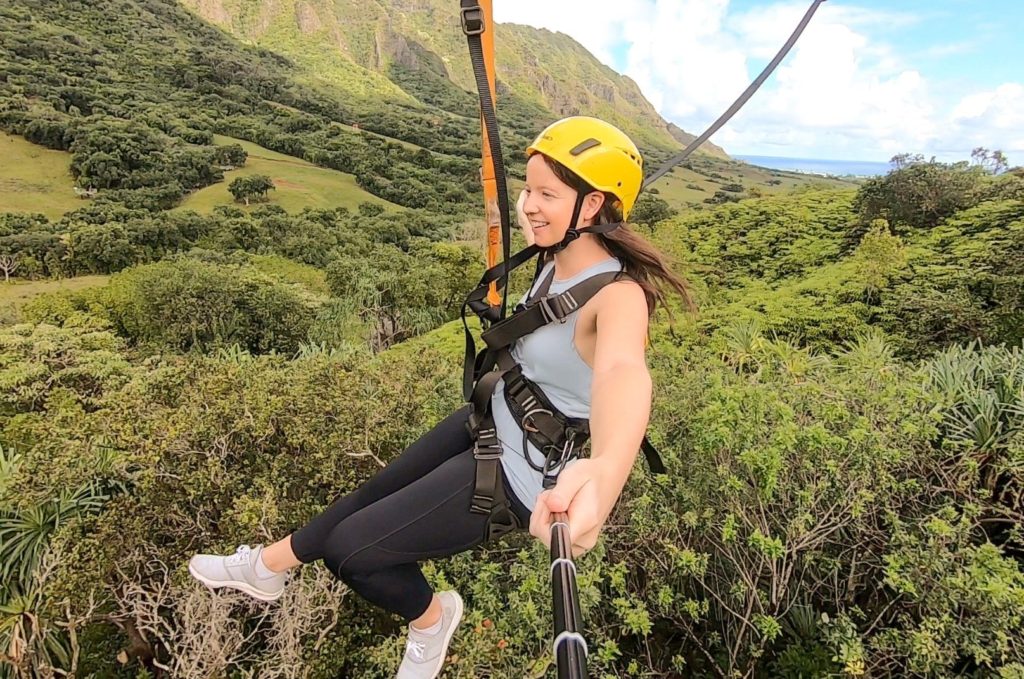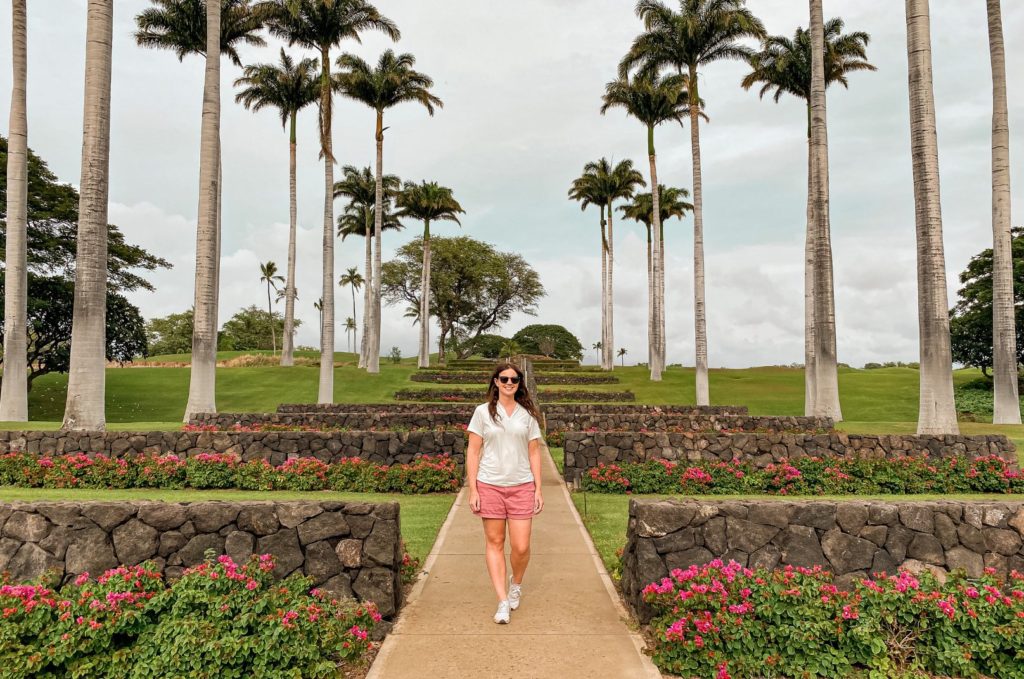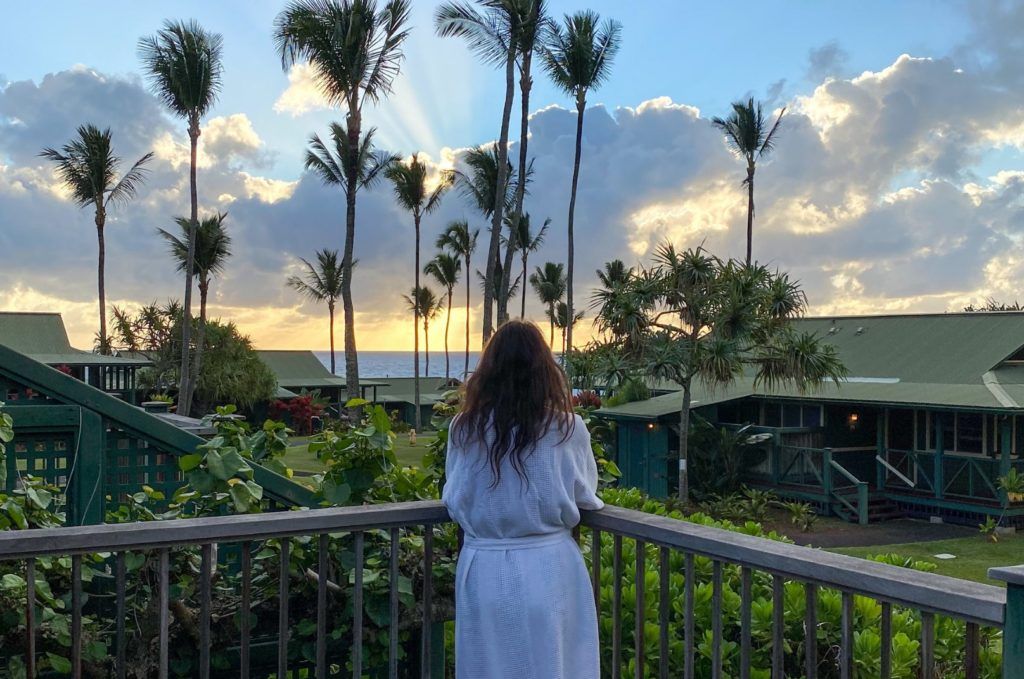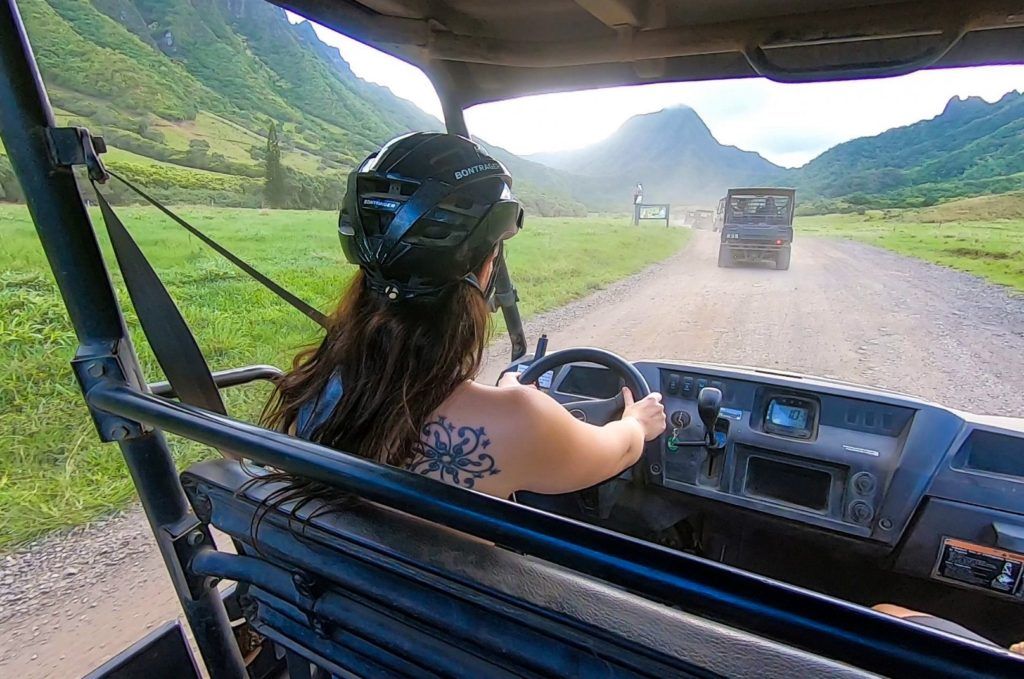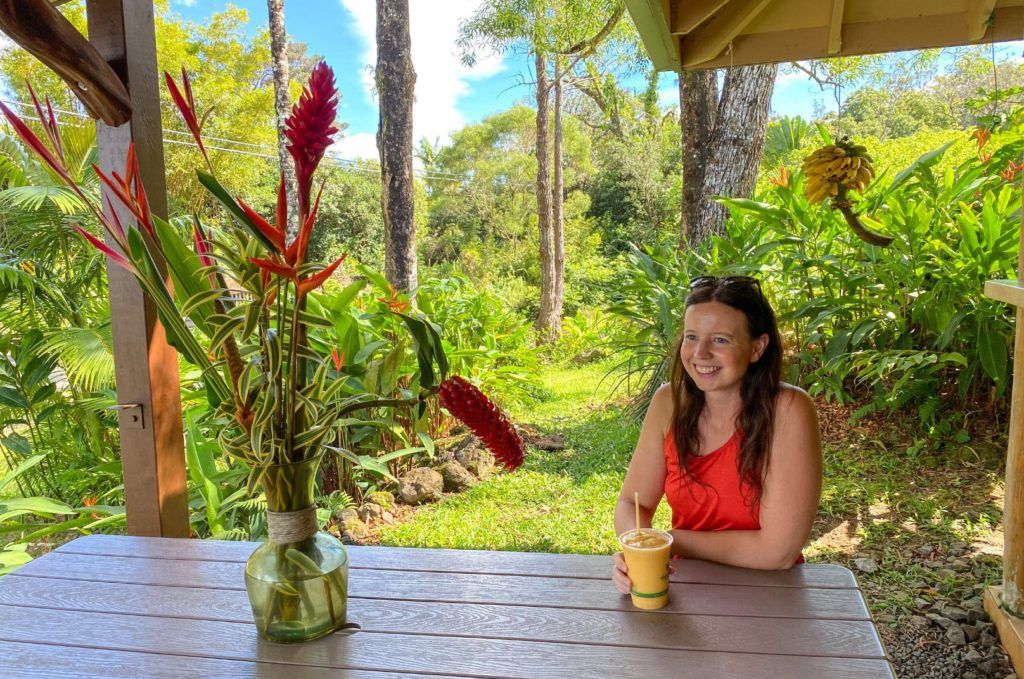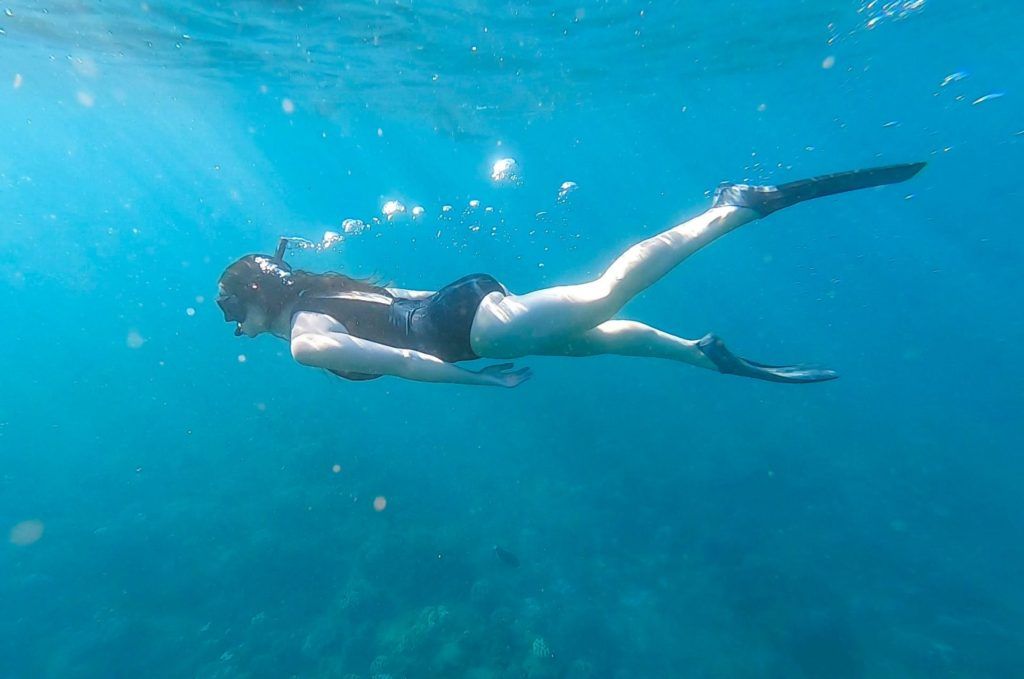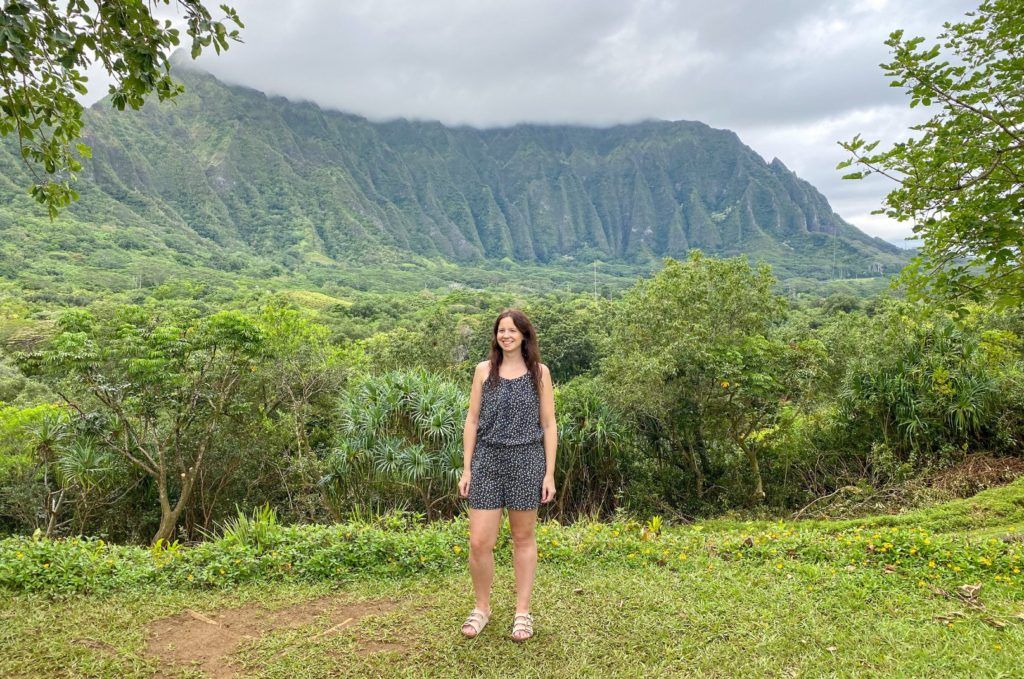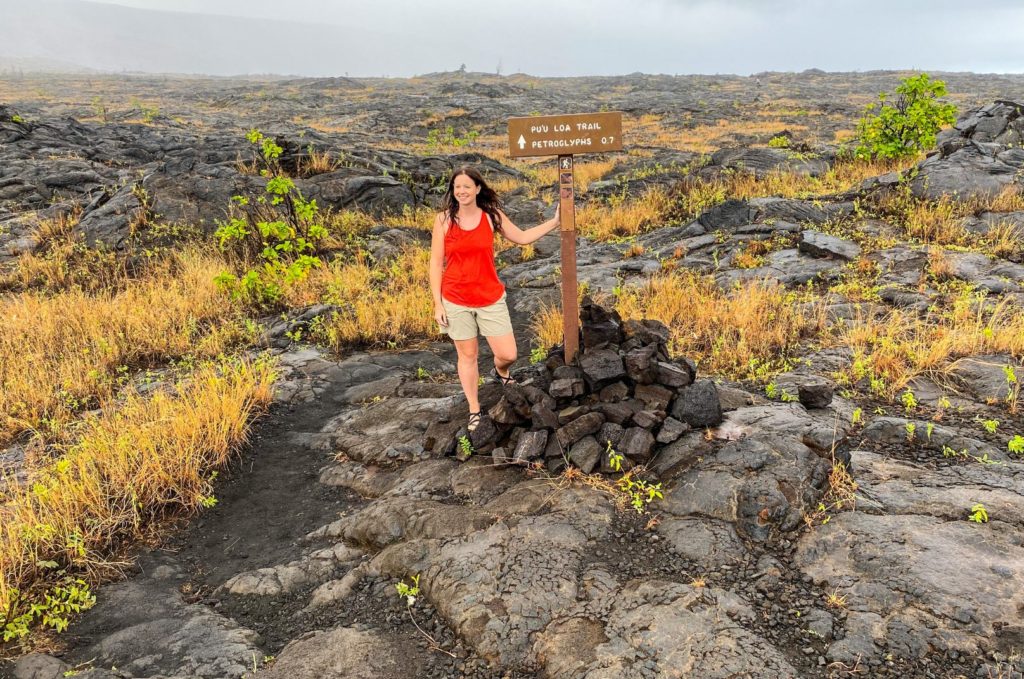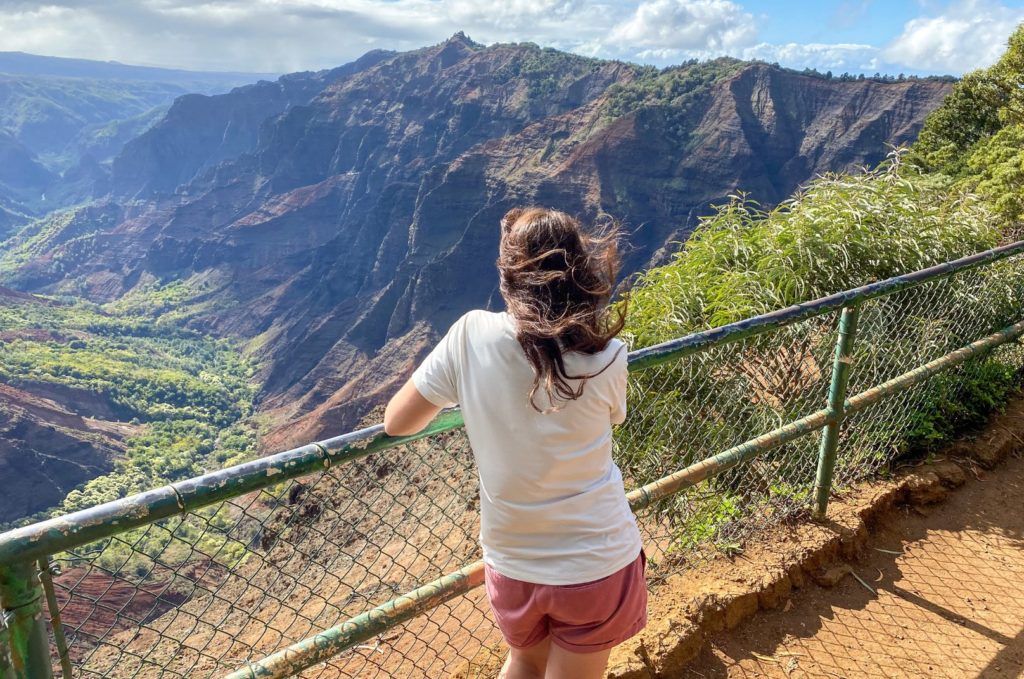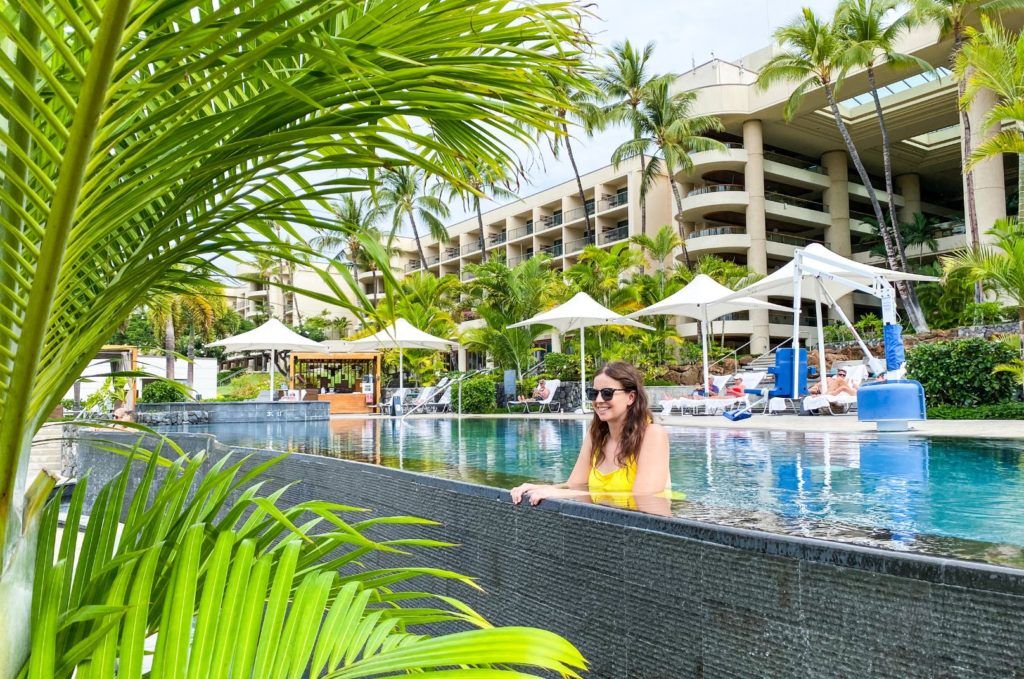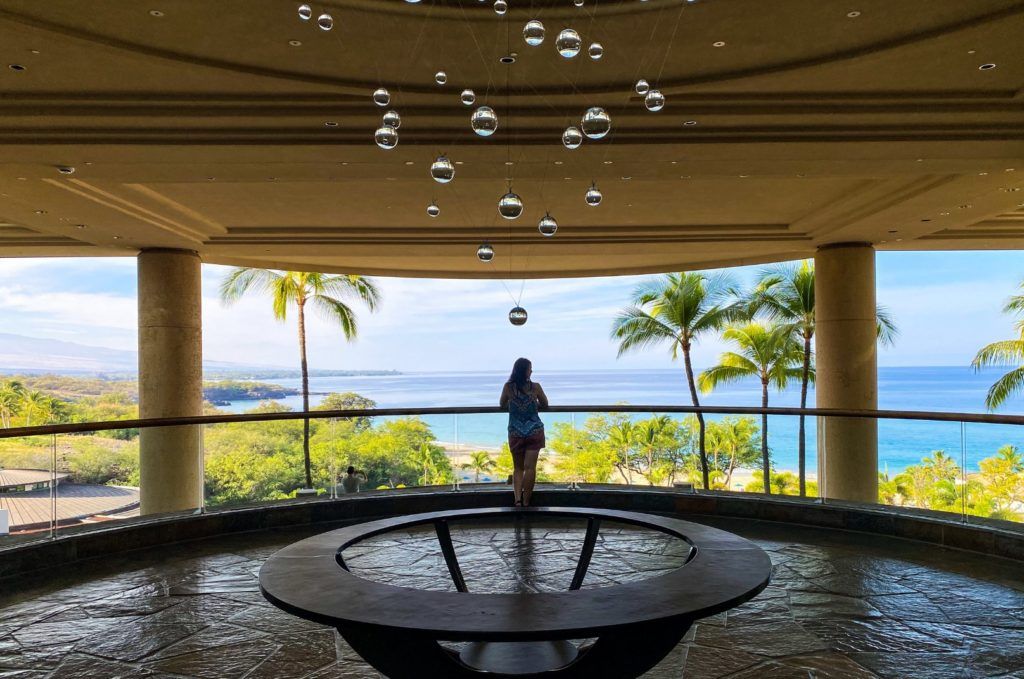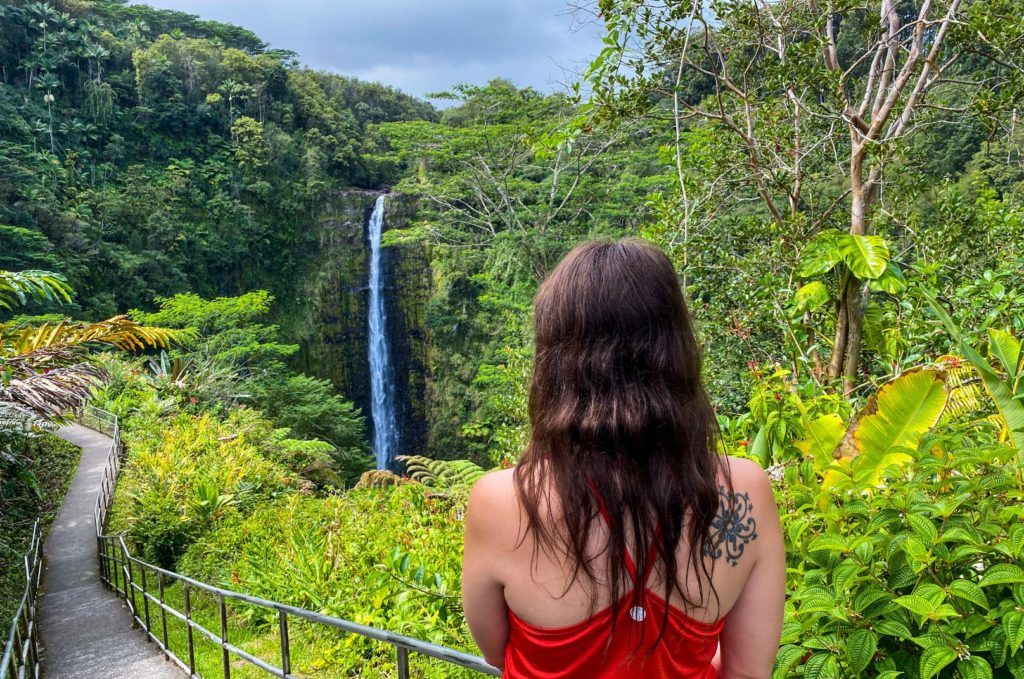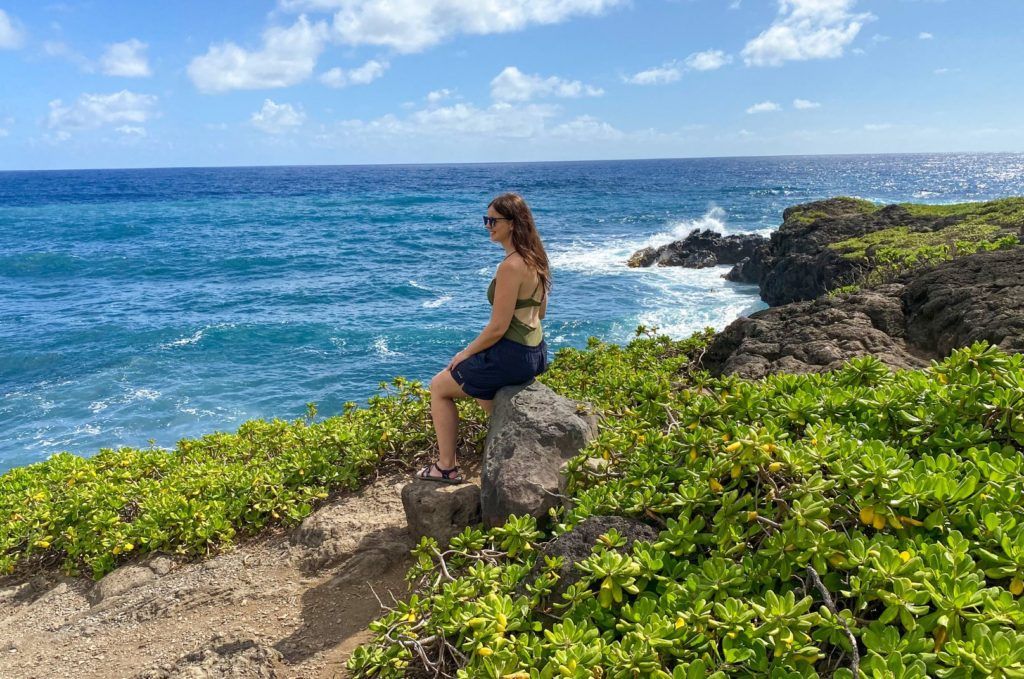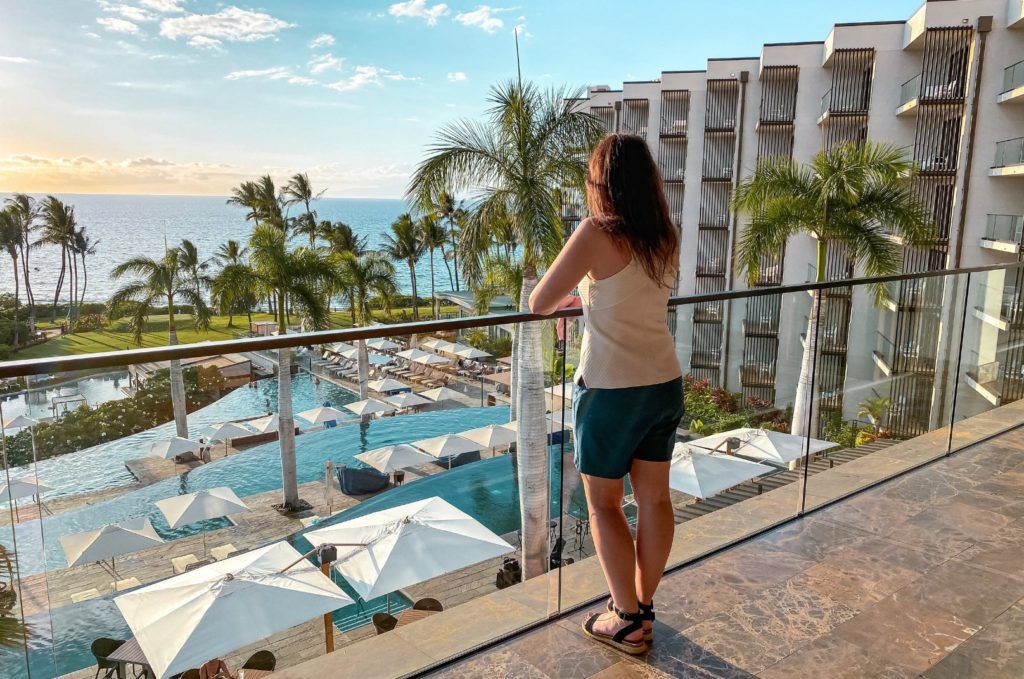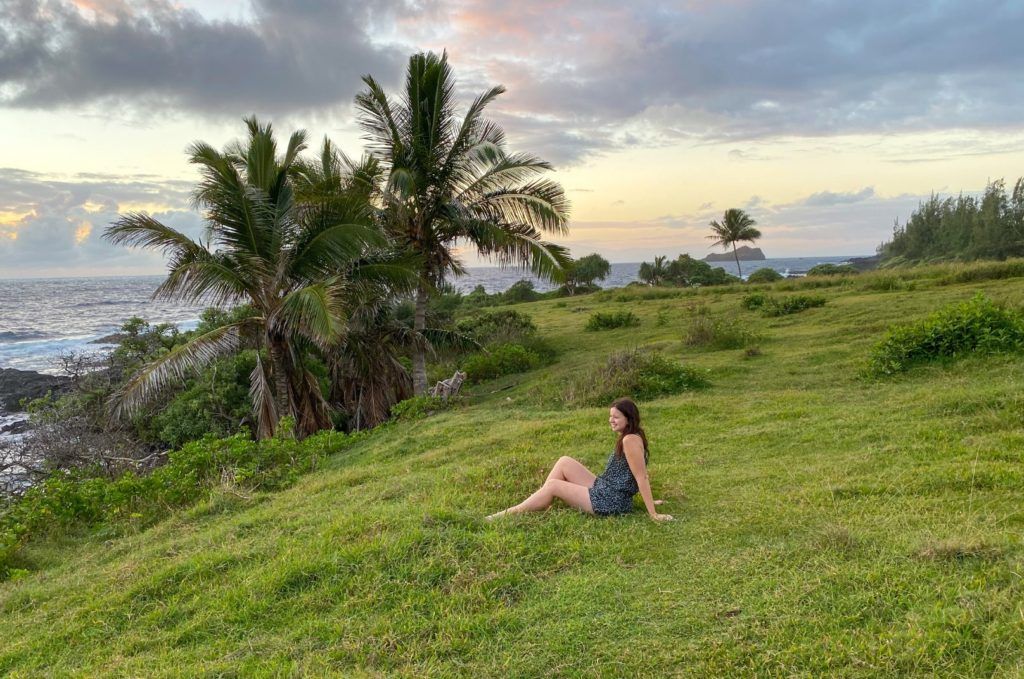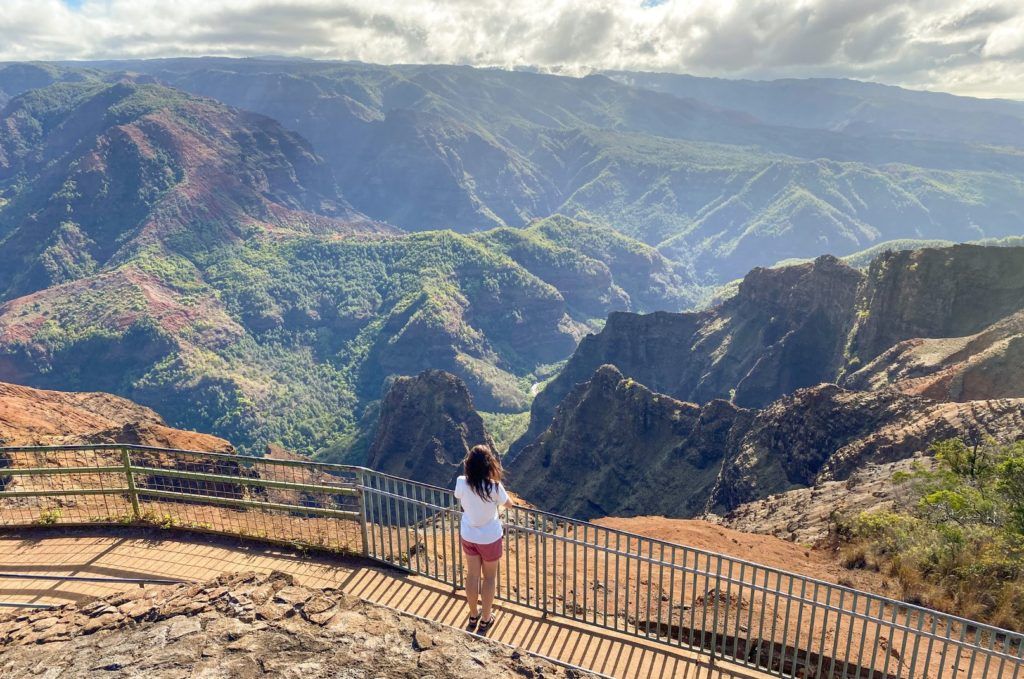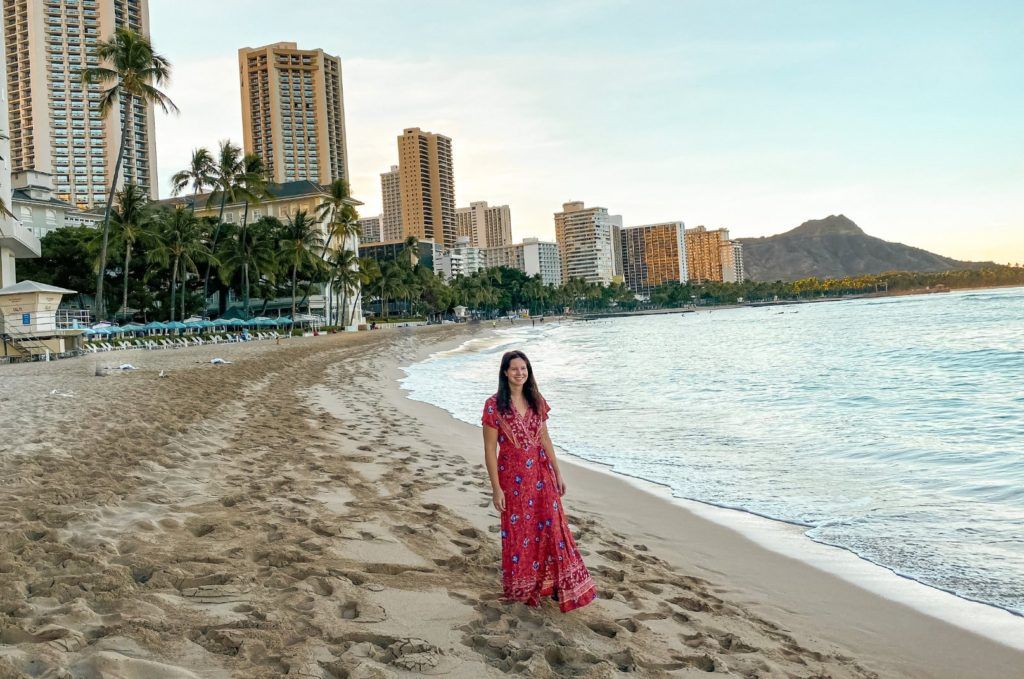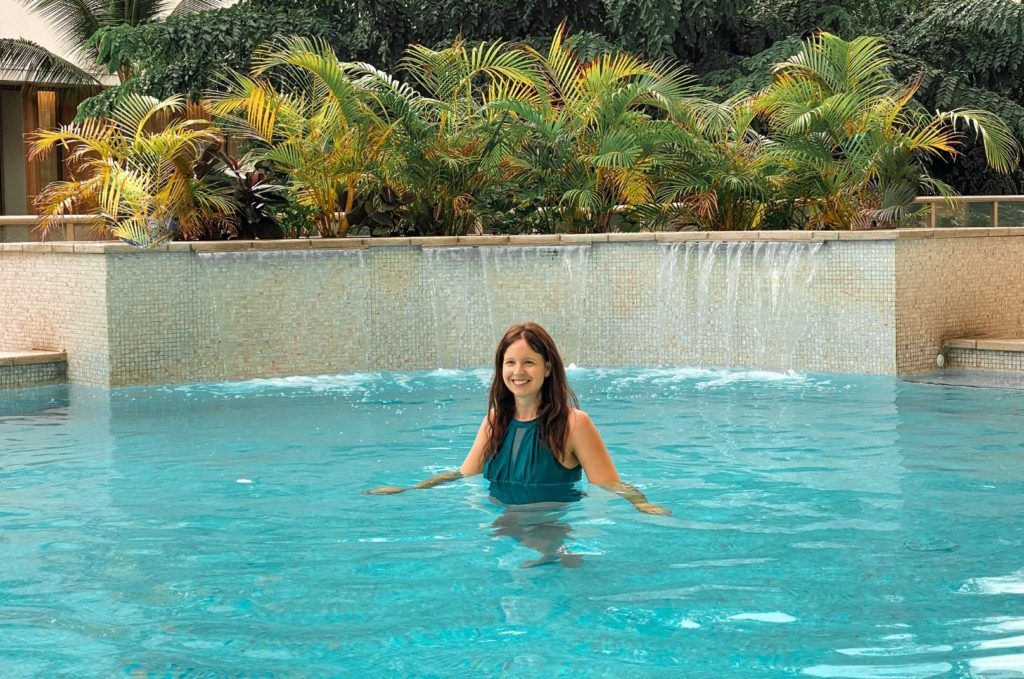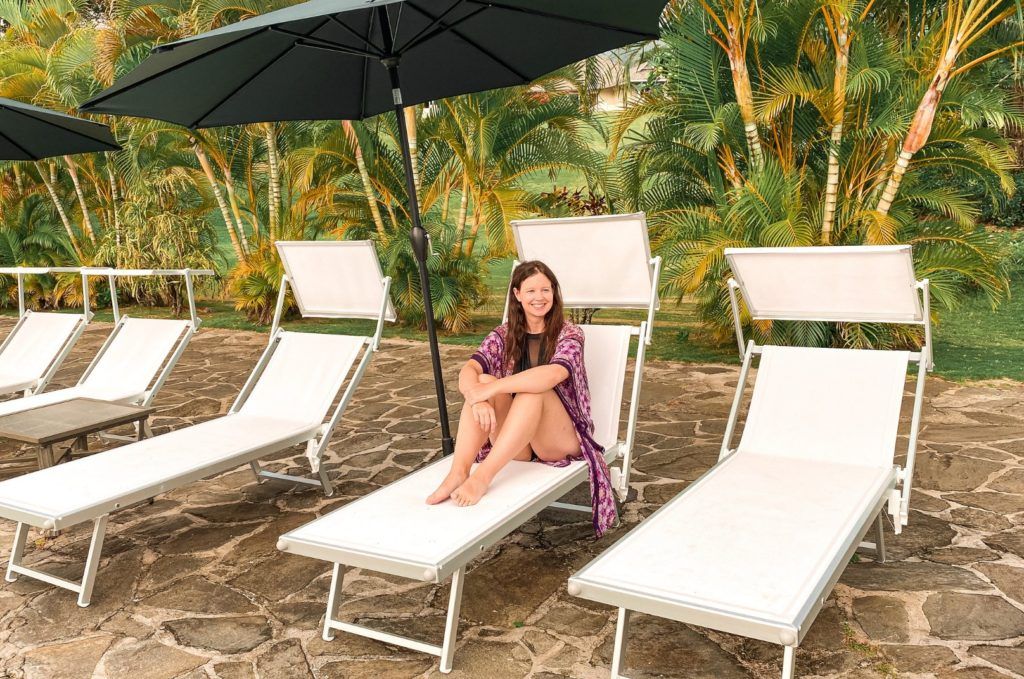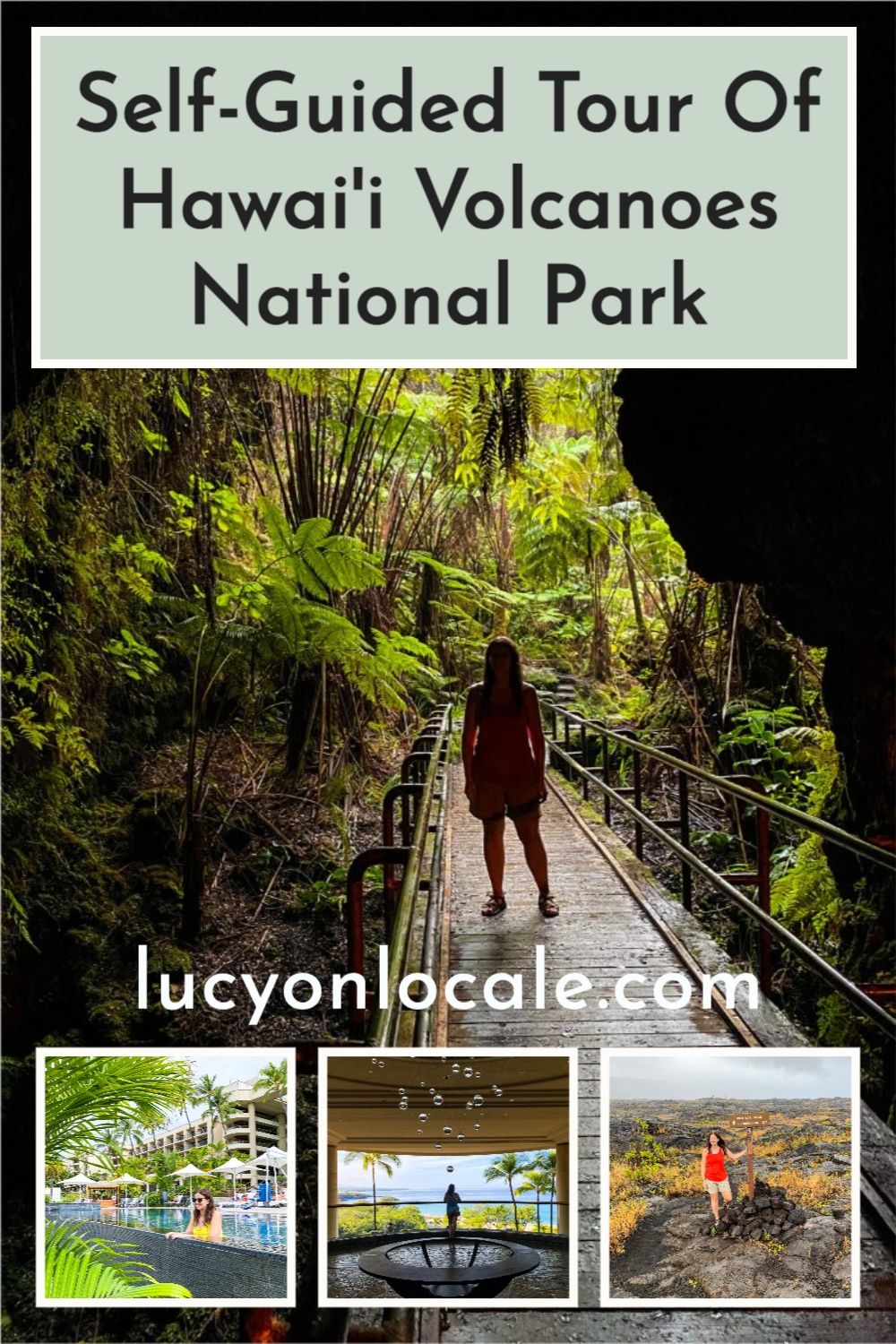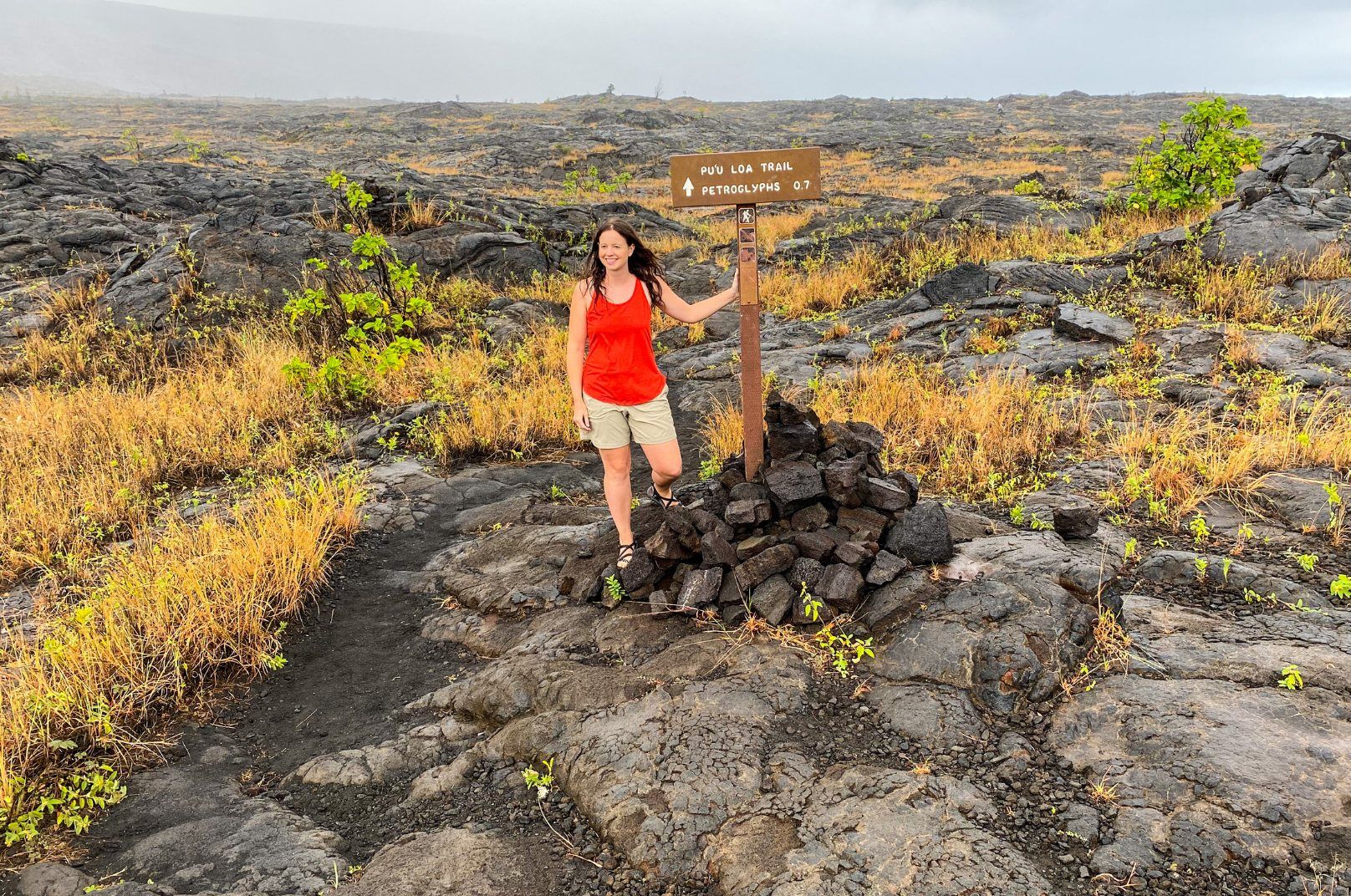
Hawai’i Volcanoes National Park is one of the best off-the-beaten-path national parks to visit. Because this park covers a large portion of the Big Island of Hawaii, I recommend spending at least a couple of days exploring this park. So I’ve created this guide for planning a self-guided tour of Hawai’i Volcanoes National Park.
The Ultimate Hawaii Travel Guide
Fun Fact: one of the active volcanoes in this national park, Mauna Loa, is the Earth’s largest volcano and is higher than Mount Everest (because it goes so far underwater to the ocean floor).
Here’s the ultimate guide for planning a self-guided tour of Hawai’i Volcanoes National Park!

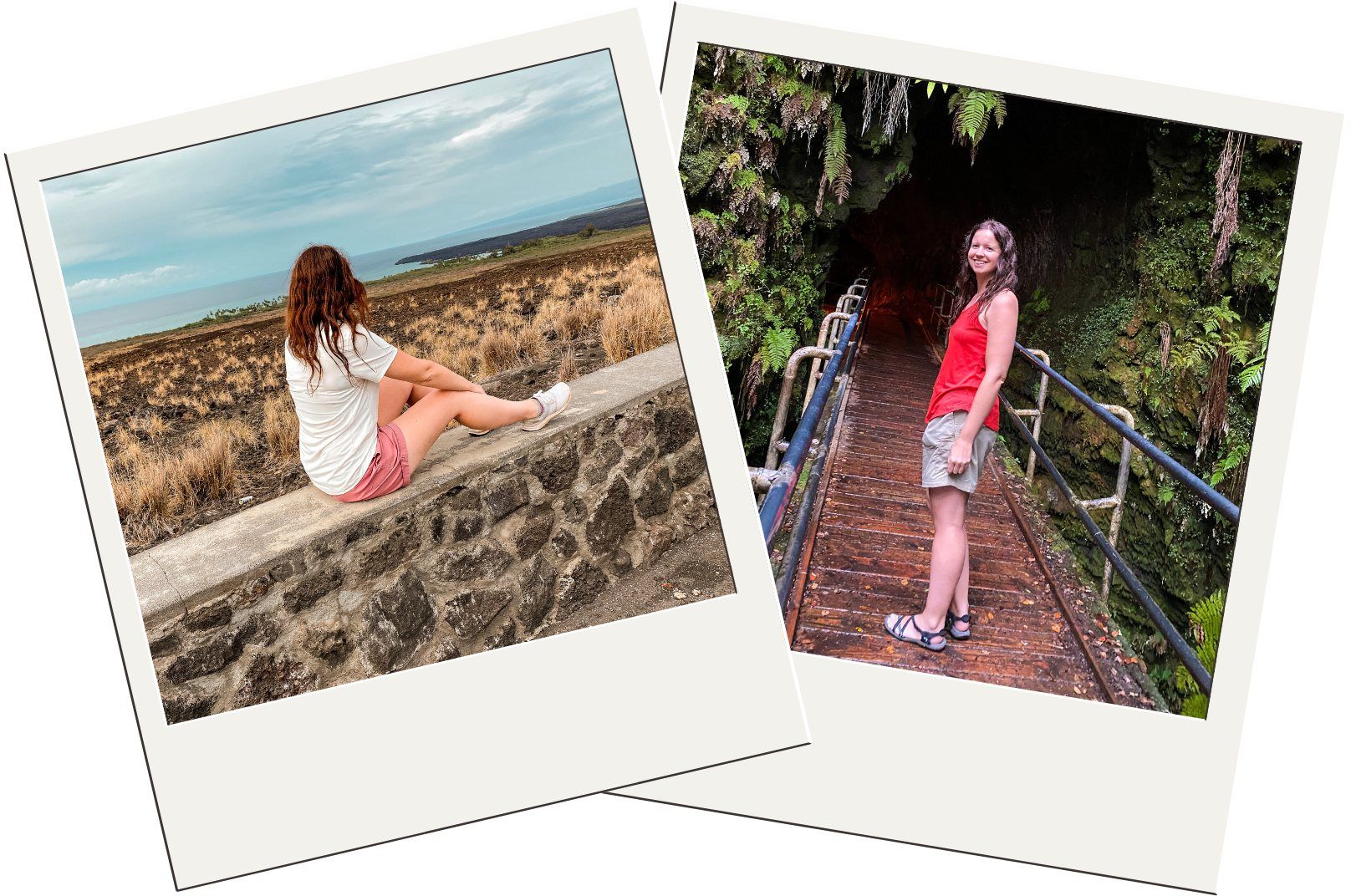
When To Go
The Big Island’s peak travel season is December – March when travelers from the Northern Hemisphere want to escape the cold. Prices and tourist numbers will be at their highest everywhere on the island. So book your accommodation, rental cars, and tours in advance to ensure availability. These are also the rainiest months, so be prepared for rain at the national park.
June – August is only slightly less crowded and expensive than December – March.
The year-round warm weather means the Big Island doesn’t have an off-season. But April – May and September – November are shoulder seasons when you can score some excellent (by Hawaii standards) accommodation and airfare deals.
Hawai’i Volcanoes National Park ranges from sea level to 4000 feet, so you need to bring layers and rain gear. At the summits, temperatures can be 12 – 15 degrees cooler than at sea level, where the coastal plains are usually hot, dry, and windy.

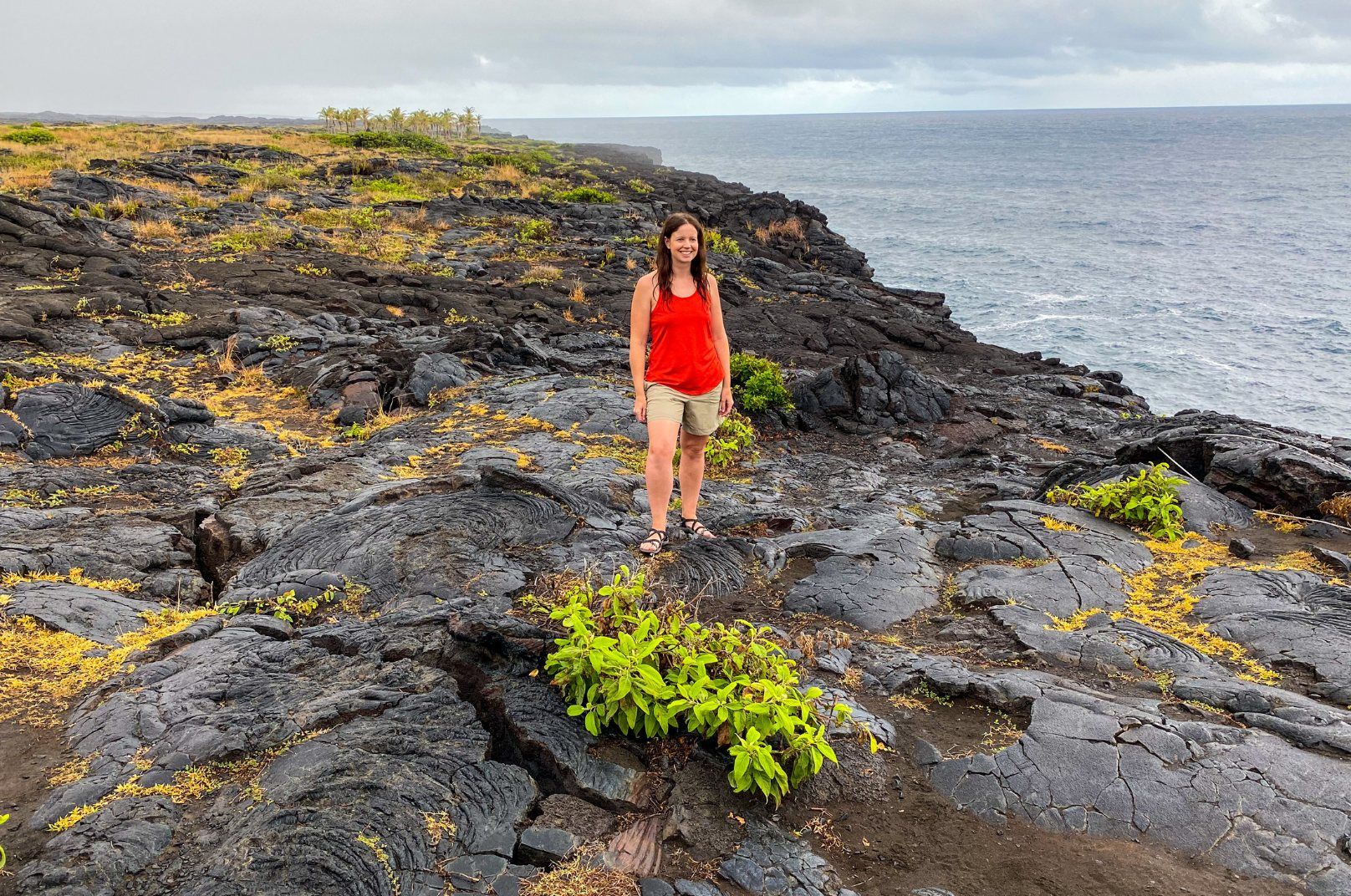
What To Do
Do a sunset and stargazing tour.
See lava glow at night – you’ll need to check with park rangers for where to view lava.
Hike the Crater Rim Trail.
Drive the Chain of Craters Road.
Walk through the Nāhuku (Thurston Lava Tube).
Drive the Crater Rim Drive.
Hike through the Pu’u Loa petroglyph field.
Do a helicopter tour (my favorite is a no-doors helicopter).

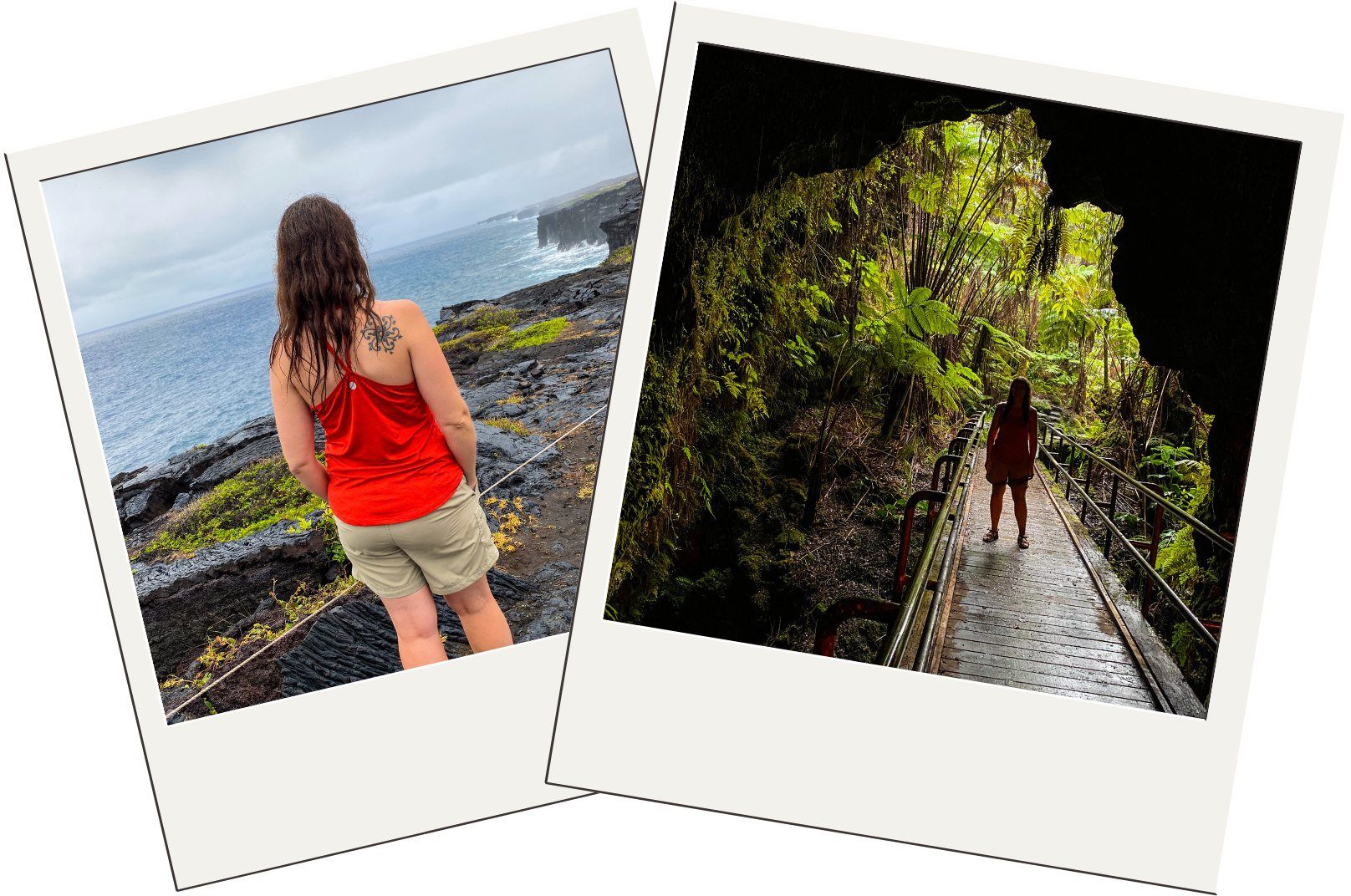
Getting Around
Getting to Hawai’i Volcanoes National Park requires driving to some of the more remote parts of the island, so having a car is essential.
You can book a driver and private car for day trips to Volcanoes National Park, but these are expensive. So I recommend a rental car to give you flexibility over your itinerary and room to store and transport your belongings.
I spent three days on the Big Island with a rental car, and I drove all over the island. But because the island is so small, I only had to fill up my tank once.
This national park needs to be seen in the day and at night, so renting a car will allow you to come and go from the park at your convenience.

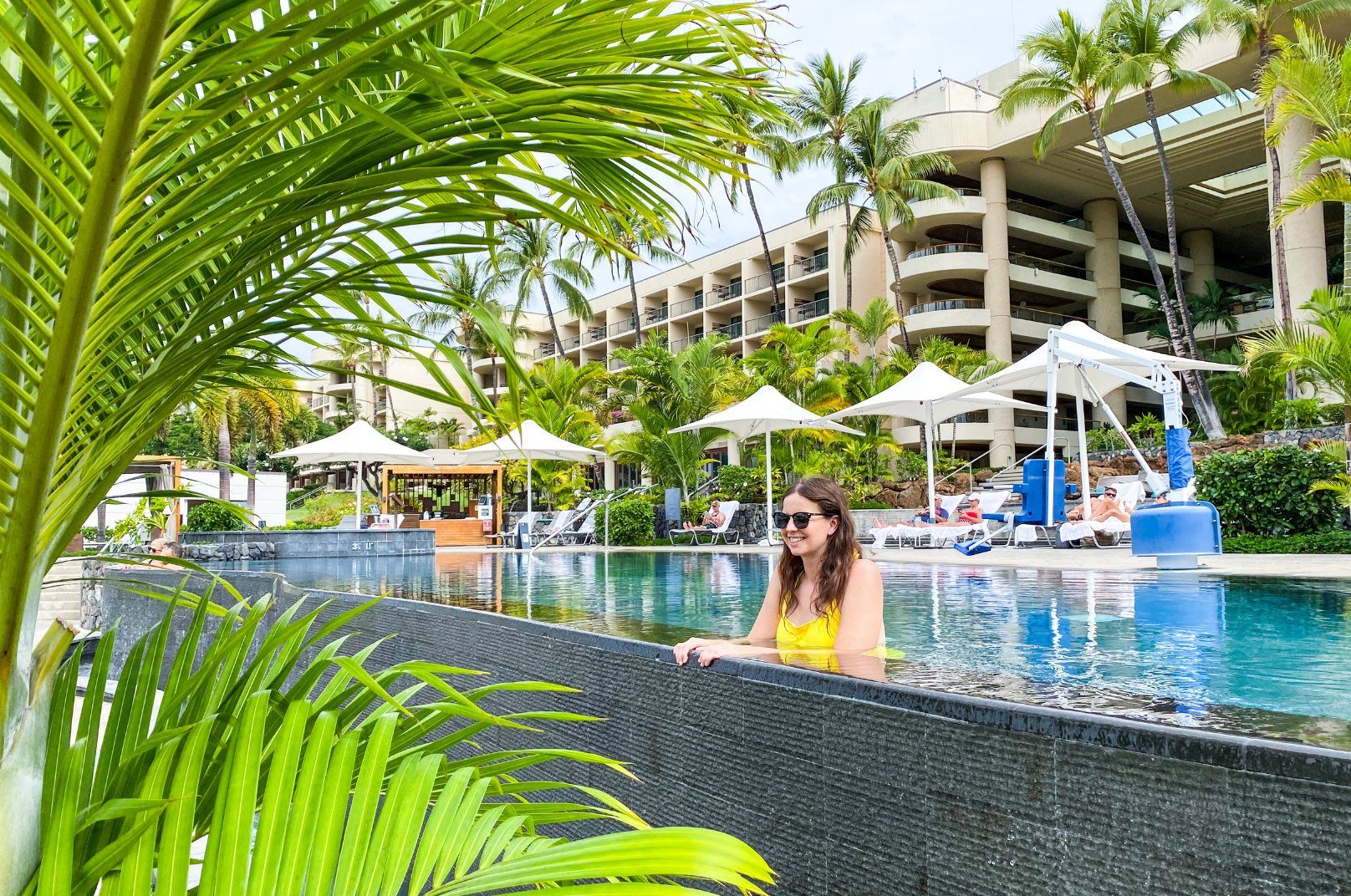
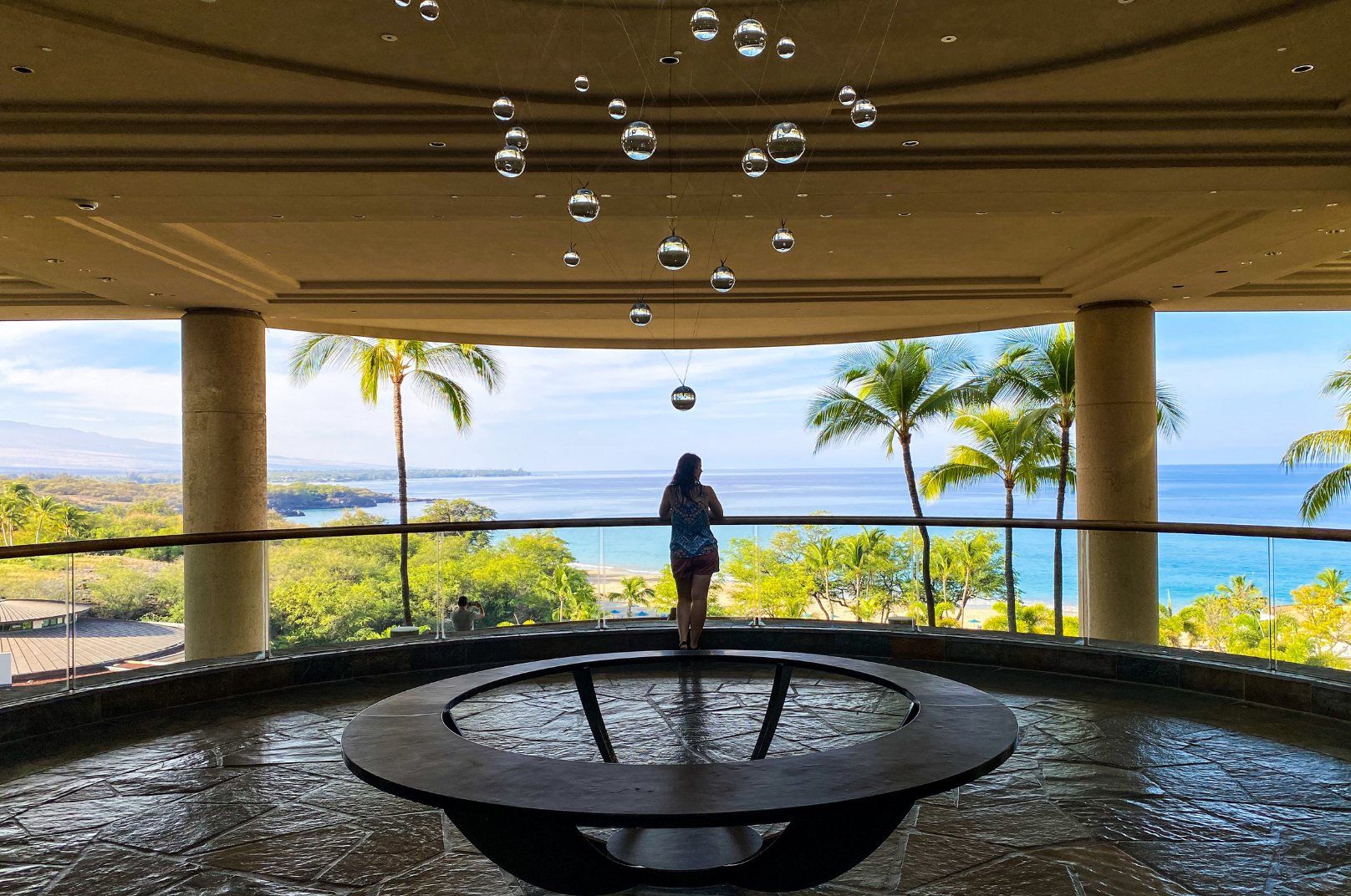
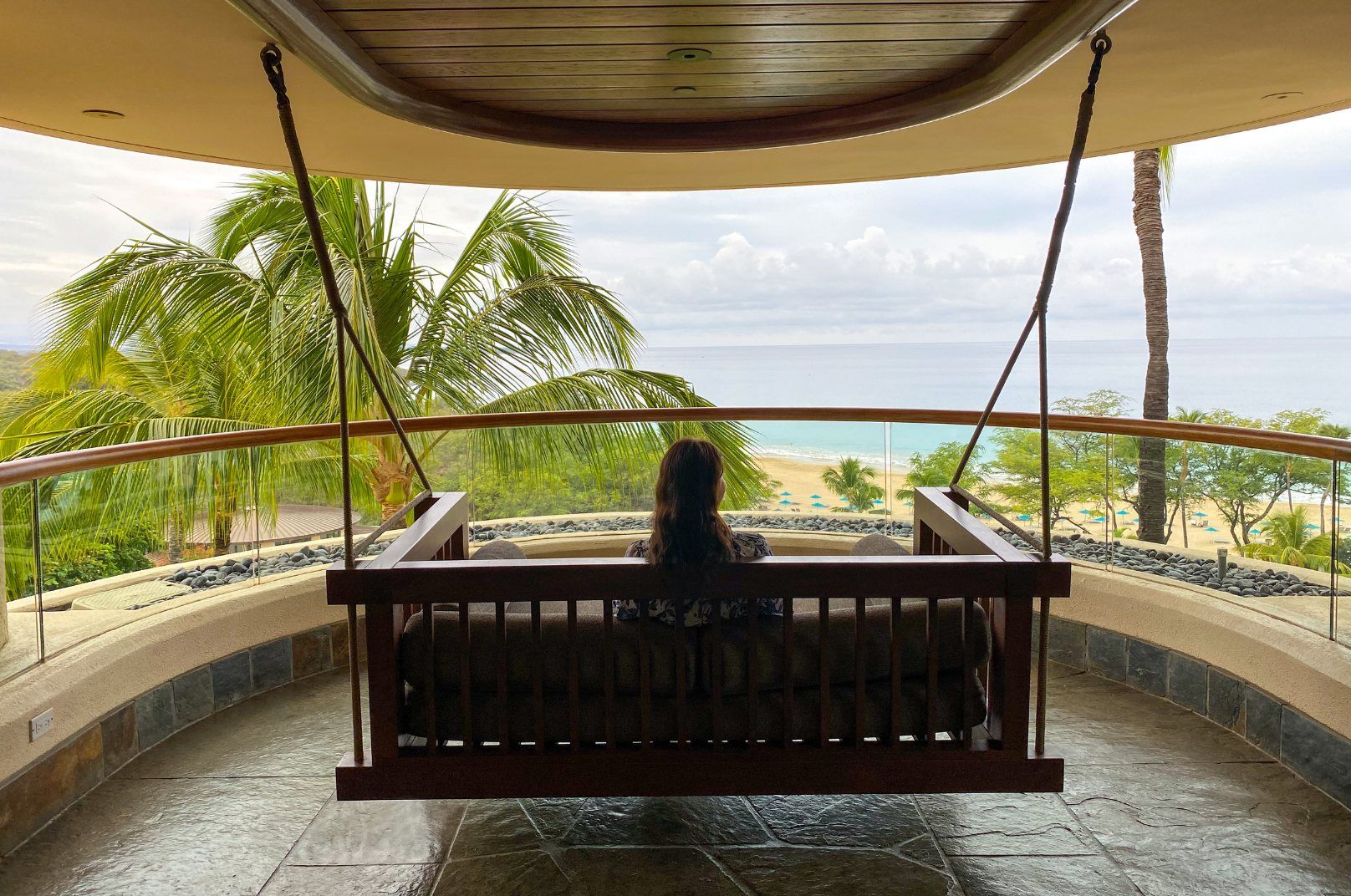
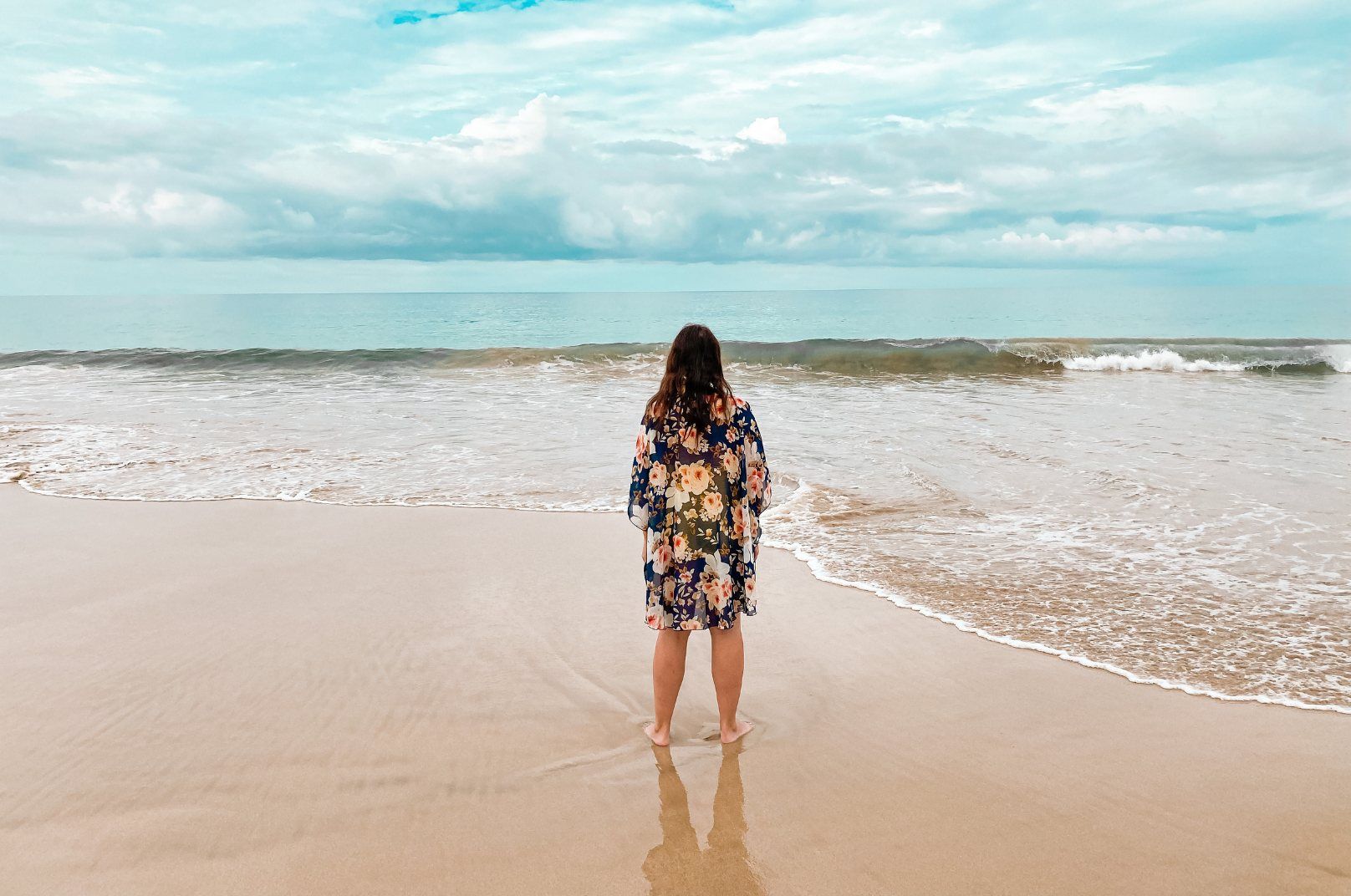
Where To Stay
Most people who visit the Big Island stay on the western (and drier) side of the island and visit Hawaiʻi Volcanoes National Park as a day trip. I recommend splitting your trip to spend your first couple of nights at the Volcano House to explore the island’s national park and eastern side. Then spend the rest of your trip on the island’s western side (my favorite hotel is the Westin Hapuna Beach Resort).
So I’ve rounded up the best hotels on the Big island for every budget and preference, and the island also has some incredible vacation homes.
There are also ten camper cabins and campsites in the Nāmakanipaio Campground.

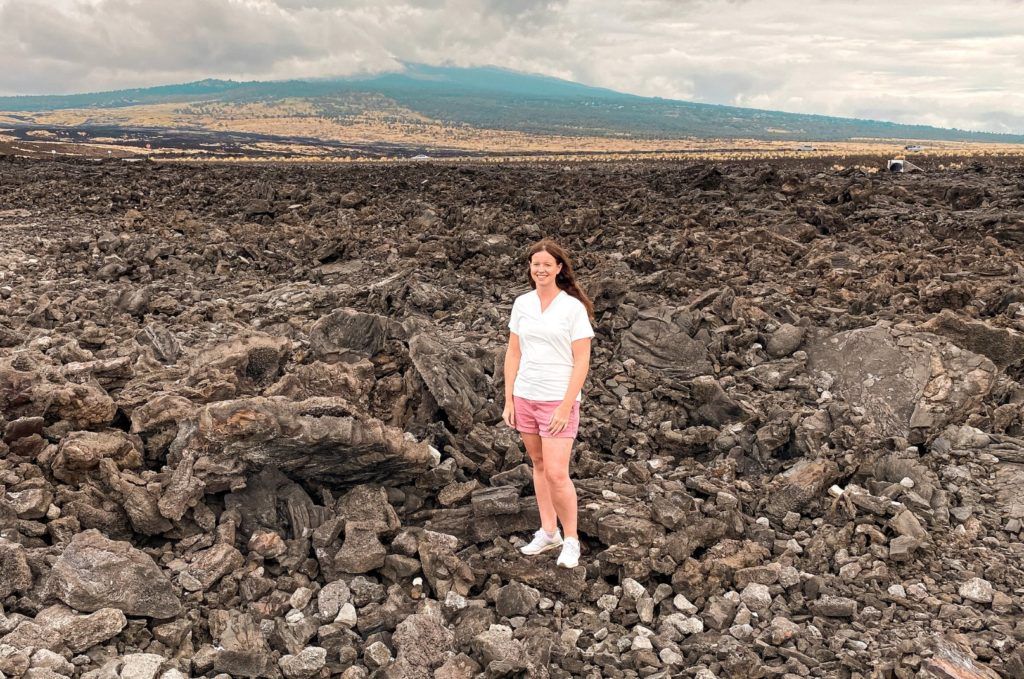
Know Before You Go
Hawaiʻi Volcanoes National Park is open 24 hours a day, seven days a week, and all holidays.
The Hawai’i Volcanoes National Park Kahuku Unit is located on Hwy 11, between mile markers 70 and 71, and it’s is open Thursday – Sunday from 9 a.m. to 4 p.m.
Stay on marked trails and overlooks, and avoid cliffs, cracks, and steam vents.
The summit of Kīlauea can be cold any time of day and year, so bring a rain jacket and wear long pants and closed-toe shoes.
Lava fields are shadeless and hot, so wear sunscreen, a hat, and sunglasses, and bring at least two quarts of drinking water per person.
Expect strong winds, cliffs, high waves, and unpredictable surf along the coast.
Lava rock is uneven, unstable, and sharp, so hike with a walking stick, use extreme caution, and be prepared to walk slower than you usually would.
Parking can be limited at the popular trailheads, overlooks, and visitor center. So arrive early and/or stay late to beat the crowds.

Shop My National Park Essentials

Is there anything you’d add to this guide for planning a self-guided tour of Hawai’i Volcanoes National Park? If so, let us know in the comments!

For Planning The Rest Of Your Hawaii Trip

Recommended Tours on The Big Island

Frequently Asked Questions
How much time do you need at Volcanoes National Park?
This national park needs to be seen during the day and at night. So I recommend spending at least one night near the park so you can explore the park with the sun up and down.
How much does it cost to go to Hawai'i Volcanoes National Park?
The entrance fees to the park are $30 per vehicle, $25 per motorcycle, and $15 per pedestrian or bicyclist. You can also use your Annual Park Pass.
Can you tour Volcanoes National Park on your own?
Yes. You can drive yourself to every part of this park, and all trails and scenic drives are well-marked.
Do you need reservations for Volcanoes National Park?
No, but I highly recommend arriving early and/or staying late in the park to beat the crowds.
Is it worth visiting Volcanoes National Park?
Yes! This national park is the of the most unique and beautiful national parks to visit in the country. This park has it all – hiking, wildlife viewing, otherworldly landscapes, and breathtaking vistas.
Can you walk on a volcano in Hawaii?
Yes, Hawai’i Volcanoes National Park has several trails that will let you hike on an active volcano.
What is the best time to visit Hawai'i Volcanoes National Park?
The Big Island’s peak travel season is December – March when travelers from the Northern Hemisphere want to escape the cold. Prices and tourist numbers will be at their highest everywhere on the island. So book your accommodation, rental cars, and tours in advance to ensure availability. These are also the rainiest months, so be prepared for rain at the national park.
June – August is only slightly less crowded and expensive than December – March.
The year-round warm weather means the Big Island doesn’t have an off-season. But April – May and September – November are shoulder seasons when you can score some excellent (by Hawaii standards) accommodation and airfare deals.
Hawai’i Volcanoes National Park ranges from sea level to 4000 feet, so you need to bring layers and rain gear. At the summits, temperatures can be 12 – 15 degrees cooler than at sea level, where the coastal plains are usually hot, dry, and windy.
Can you drive through Volcanoes National Park?
Yes. This national park is easy to visit by car, and driving the two scenic drives – Crater Rim Drive and Chain of Craters Road – are two of the best things to do in the park.

This is not a sponsored post, and, as always, the thoughts and opinions expressed in this guide for planning a self-guided tour of Hawai’i Volcanoes National Park are entirely my own. Some of the links in this guide for planning a self-guided tour of Hawai’i Volcanoes National Park are affiliate links, and, at no cost to you, I may earn a small commission.
 Travel Shop
Travel Shop Merch
Merch Travel Tips
Travel Tips
 Photography
Photography Points & Miles
Points & Miles Credit Cards
Credit Cards